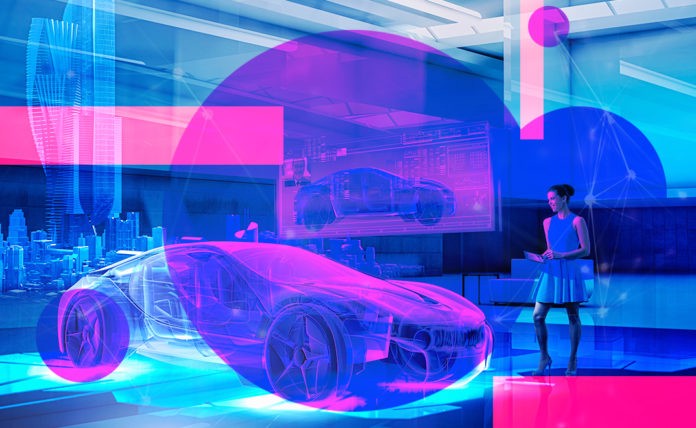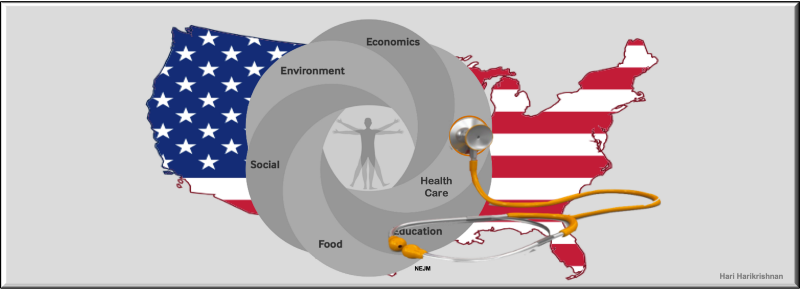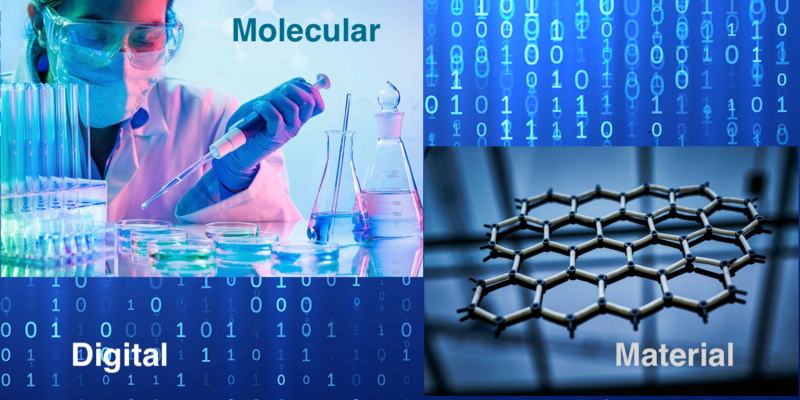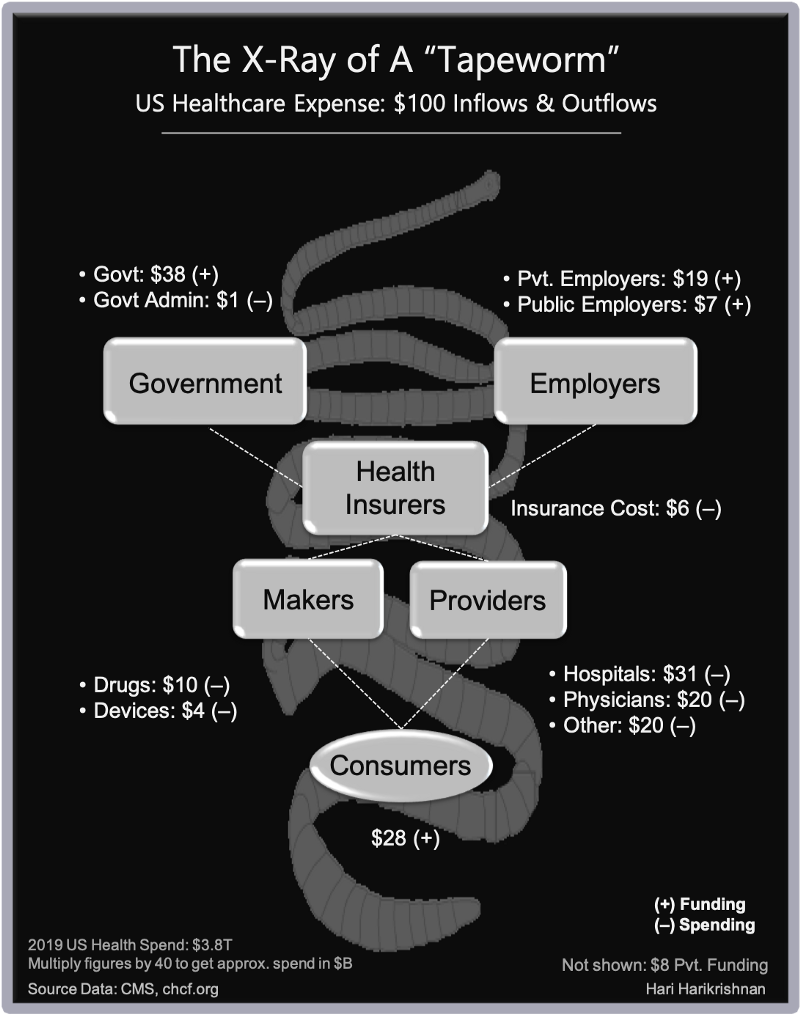A look at the evolving world of IoT standards across IT and OT.
I am often asked what the standards for IoT are. Is it MQTT or AMQP? What about ZigBee or Z-Wave? Is it 6LoWPAN or LoRa and the LPWAN variations? Do we start with an OSI 7-layer framework? What about the long-standing OT (operational technologies) protocols of the industrial world, like OPC, CIP, or FieldBus?
In this article, we’ll take a look at the evolving world of IoT standards using a cyber-physical systems approach with three steps:
- See sample interactions in a complex cyber-physical system (CPS)
- Look at how to choreograph the interactions for outcomes
- See a sampling of protocols needed for the interactions across IT and OT
IoT makes cyber-physical systems (CPS) possible. CPS includes autonomous vehicles, medical systems, process control, robotics and so on — wherever physical systems (“things”) and cyber systems (IT-based systems) are combined. If we have to choreograph the interactions for outcomes, we need to take an IT + OT approach to protocols.
The intent here is not to list every protocol, but show the broad categories and their evolution. For details on specific IT protocols, this page has a good list.
IoT Is All About Interactions
At the core of IoT are interactions where information is exchanged between physical or virtual end points. Below is an example of a cyber-physical system and the interactions between the various actors in the system:

In this case of connected cars, we have to orchestrate interactions across different entities; interactions between the people and business entities (B2B/B2C/P2P) and interactions between the physical and virtual entities (M2X/V2X/App2App). It is a veritable X2X world out there!
Control and Automation — The Ultimate Goal
The goal of fostering interactions and integrating physical things with cyber infrastructure is to monitor and control things. Once we have control, we can automate workflows, big and small, across humans and things.
How we do that using various technologies at our disposal looks like this:

From left to right, this is a progression of connecting our assets (physical or people), to processing data, to automating simple tasks, to coordinating complex workflows.
Two aspects of such a system stand out in this assets-to-automation progression.
Control and Communication
To build complex cyber-physical systems that interact, we need to control the systems and enable workflows. We do this by communicating securely with the things we want to control. [I’ll skip security discussion except to note that some level of security is often embedded in communication and control protocols themselves.]
The Protocols and Evolution
Now that we’ve covered the why of protocols, here is a bird’s-eye view of IT / ICT (Information and Communication Technologies) and OT protocols categorized broadly into control vs. communication and roughly mapped to our favourite OSI 7-layer model:
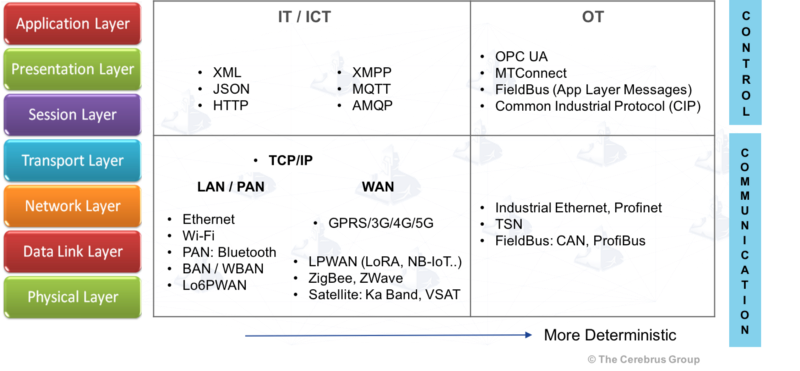
As I said, this is not a comprehensive list, but a simplified categorization to show the world of IoT protocols and its evolution.
Notes and key takeaways from this:
- OT protocol suites often cover physical, data link and app layers of the OSI stack. So I’ve categorized OT protocols into control (app tier) and communication.
- OT standards need to deliver synchronization and determinism compared to IT. Reason is simply this: Actuator actions can’t be non-determinstic. e.g. The autonomous car needs to stop in milliseconds.
- ICT WAN standards are bifurcating into high-power/high-bandwidth and low-power/low-bandwith to cater to people and things.
- Most ICT WAN protocols aid in “sensing” not in “actuating.” For example, if you are doing telesurgery using a robotic arm, make sure the quality-of-service on that connection is OT-standard! Alternatively, plan for edge computing if you are pairing LPWAN with an actuator.
- Satellite communications: Don’t underestimate what Iridium or Else can do for IoT.
- Vertical-specific protocols and interoperability standards: Expect these to evolve like HL7 or Digital Imaging and Communications in Medicine (DICOM) at the application layers.
- Both IT and OT worlds have a lot to learn from each other on evolving the standards for a cyber-physical world. Industrial Ethernet is just one example of this cross-pollination.
Summary
IoT protocols aren’t limited to internet protocols or the ones that IT domain created. A plethora of standards exist in OT and are tailored for specialized OT applications from production floor control to subsystem connectivity in cars. OT and IT protocols evolved separately with some borrowing from each other.
As IoT evolves, both IT and OT experts need to architect cyber-physical systems by cross-pollinating knowledge across both domains.
Originally posted at iotforall.com

